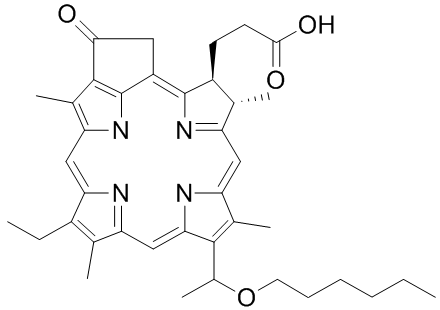microRNA-26a is related to the inhibition of NPC cell growth and tumourigenesis. However, the signalling pathway underlying EZH2 regulation in NPC  remains unclear. Glycogen synthase kinase 3 beta is a serine/threonine protein kinase involved in glycogen metabolism and the Wnt signalling pathway, which plays important roles in embryonic development and tumourigenesis. Active GSK3b is able to phosphorylate substrates, such as b-catenin and Tau, resulting in ubiquitin-mediated degradation. GSK3b activity can be abrogated by direct phosphorylation on the Ser9 residue by phosphatidylinositol 3-kinase Akt, mitogen-activated protein kinase p90RSK, or mammalian target of rapamycin/S6K upon a number of extracellular stimuli, such as insulin, epidermal growth factor, or fibroblast growth factor. Wnt signalling inactivates GSK3b through the phosphorylation of the Ser9 residue and prevents it from phosphorylating b-catenin, thus stabilising b-catenin in the cytoplasm. Whereas overexpression of GSK3b can induce apoptosis in several cell types, inactivation of GSK3b has been found to reduce apoptosis. Moreover, increasing evidence shows that GSK3b plays a critical role in linking multiple pathways to regulate cellular apoptosis and tumourigenesis by direct phosphorylation of a broad range of substrates, including translation factor eIF2B, cyclin D1, c-Jun, cmyc, NFAT, cyclic AMP-responsive element binding protein. To test this hypothesis, we examined the expression of EZH2 and pGSK3b in NPC specimens and investigated the possible regulatory mechanism in vitro. Our findings regarding GSK3bregulated EZH2 expression may be beneficial for understanding the pathogenic mechanism of NPC and improve the prognosis of this disease. To further test whether EZH2 was involved in the enhanced invasion of NPC cell lines followed by GSK3b inactivation, we transfected EZH2 siRNA into NPC cells to inhibit EZH2 expression under different conditions. As illustrated in Fig 7, EZH2 siRNA transfection significantly changed the covered area of migrated cells in the scratch assay, as well as the number of invaded cells in the transwell assay. The effects of EZH2 siRNA on the covered area of migrated cells, as well as the number of invaded cells, were especially significant in the GSK3b-KD group. These findings suggest that EZH2 is essential for the enhanced migratory and invasive capacities of NPC cell lines after GSK3b inactivation. In the present study, we present the preliminary clinical and in vitro data suggesting a possible role for GSK3b in the regulation of EZH2 and subsequent progression of NPC. Our findings suggest that an aberrant GSK3b/EZH2 regulatory axis may be critical for initialising the formation of NPC. NPC is known to be a prevalent malignant neoplasm with a distinct epidemiology and geographical distribution. Currently, southern China has the highest risk worldwide, and there are many advanced patients suffering from a poor prognosis.
remains unclear. Glycogen synthase kinase 3 beta is a serine/threonine protein kinase involved in glycogen metabolism and the Wnt signalling pathway, which plays important roles in embryonic development and tumourigenesis. Active GSK3b is able to phosphorylate substrates, such as b-catenin and Tau, resulting in ubiquitin-mediated degradation. GSK3b activity can be abrogated by direct phosphorylation on the Ser9 residue by phosphatidylinositol 3-kinase Akt, mitogen-activated protein kinase p90RSK, or mammalian target of rapamycin/S6K upon a number of extracellular stimuli, such as insulin, epidermal growth factor, or fibroblast growth factor. Wnt signalling inactivates GSK3b through the phosphorylation of the Ser9 residue and prevents it from phosphorylating b-catenin, thus stabilising b-catenin in the cytoplasm. Whereas overexpression of GSK3b can induce apoptosis in several cell types, inactivation of GSK3b has been found to reduce apoptosis. Moreover, increasing evidence shows that GSK3b plays a critical role in linking multiple pathways to regulate cellular apoptosis and tumourigenesis by direct phosphorylation of a broad range of substrates, including translation factor eIF2B, cyclin D1, c-Jun, cmyc, NFAT, cyclic AMP-responsive element binding protein. To test this hypothesis, we examined the expression of EZH2 and pGSK3b in NPC specimens and investigated the possible regulatory mechanism in vitro. Our findings regarding GSK3bregulated EZH2 expression may be beneficial for understanding the pathogenic mechanism of NPC and improve the prognosis of this disease. To further test whether EZH2 was involved in the enhanced invasion of NPC cell lines followed by GSK3b inactivation, we transfected EZH2 siRNA into NPC cells to inhibit EZH2 expression under different conditions. As illustrated in Fig 7, EZH2 siRNA transfection significantly changed the covered area of migrated cells in the scratch assay, as well as the number of invaded cells in the transwell assay. The effects of EZH2 siRNA on the covered area of migrated cells, as well as the number of invaded cells, were especially significant in the GSK3b-KD group. These findings suggest that EZH2 is essential for the enhanced migratory and invasive capacities of NPC cell lines after GSK3b inactivation. In the present study, we present the preliminary clinical and in vitro data suggesting a possible role for GSK3b in the regulation of EZH2 and subsequent progression of NPC. Our findings suggest that an aberrant GSK3b/EZH2 regulatory axis may be critical for initialising the formation of NPC. NPC is known to be a prevalent malignant neoplasm with a distinct epidemiology and geographical distribution. Currently, southern China has the highest risk worldwide, and there are many advanced patients suffering from a poor prognosis.
The molecular events responsible for the progression of NPC remain to be elucidated
Leave a reply